The mesmerizing phenomenon of the Northern Lights, or Aurora Borealis, has captivated travelers and adventurers for centuries. The ethereal dance of vibrant colors across the night sky is a breathtaking experience that leaves a lasting impression.
If you’ve got your heart set on the Aurora Borealis and want to start planning your trip, follow us as we explore some of the best places to see Northern Lights in the world.
Best Time to See Northern Lights
The magic of the Northern Lights is not constant throughout the year. To maximize your chances of witnessing this celestial display, plan your trip during the winter months when the nights are longest and the skies are darkest.
The optimal time for viewing is typically from late September to early April. However, the peak months are December to February.
best placeS & TOURS TO CHASE THE NORTHERN LIGHTS
Best Places to See Northern Lights | 2024
Where can you see Northern Lights? When searching for the ideal location, it’s crucial to consider certain criteria. The best places are those with clear skies, minimal light pollution, and proximity to the Arctic Circle. These factors enhance the visibility and intensity of the Aurora Borealis, providing an optimal experience.
If you’re eager to witness this natural wonder, join us on a journey to explore the best places to see the Northern Lights.
Where can you see Northern Lights
- Southern Iceland
- Yellowknife, Canada
- Whitehorse, Canada’s Yukon
- Fairbanks, Alaska
- Tromso, Norway
- Rovaniemi, Finland
- Kiruna, Sweden
- Abisko, Sweden
- North West Scotland
- Ilulissat, Greenland
Updated: best places to see Southern Lights
1. Reykjavik, and Southern Iceland
Iceland, with its accessibility and high chances of witnessing the Aurora, is a top choice. Enjoy the flexibility of renting a car for your Aurora chasing trip. With fewer entry restrictions, it remains an ideal destination, making it easy for travelers from the US and Europe to access.
Key locations include Thingvellir National Park near Reykjavik, offering dark skies, and Vatnajokull National Park in the southeast, providing optimal conditions against stunning landscapes. Jokulsarlon Glacier Lagoon and Myvatn in the north are also notable spots.

Best Time: The best time to see the Northern Lights in Southern Iceland is during the winter months, particularly from October to March. The peak activity usually occurs between 9:00 PM and 2:00 AM.
Average Temperature: Expect temperatures ranging from -1°C to 4°C during the aurora season.
What to See: Besides the Aurora, explore the stunning landscapes, geysers, and the famous Golden Circle. Imagine the dance of lights against the backdrop of cascading waterfalls and the iconic geothermal wonders.
2. Yellowknife, Canada
Yellowknife, the capital of Canada’s Northwest Territories, is one of the best places in the world to see the Northern Lights. The city’s location under the Aurora Oval ensures frequent and vibrant displays, with minimal light pollution enhancing the viewing experience.
Key locations include Aurora Village, which offers heated teepees and guided tours, and the Ingraham Trail, where you can find several perfect spots for aurora viewing.
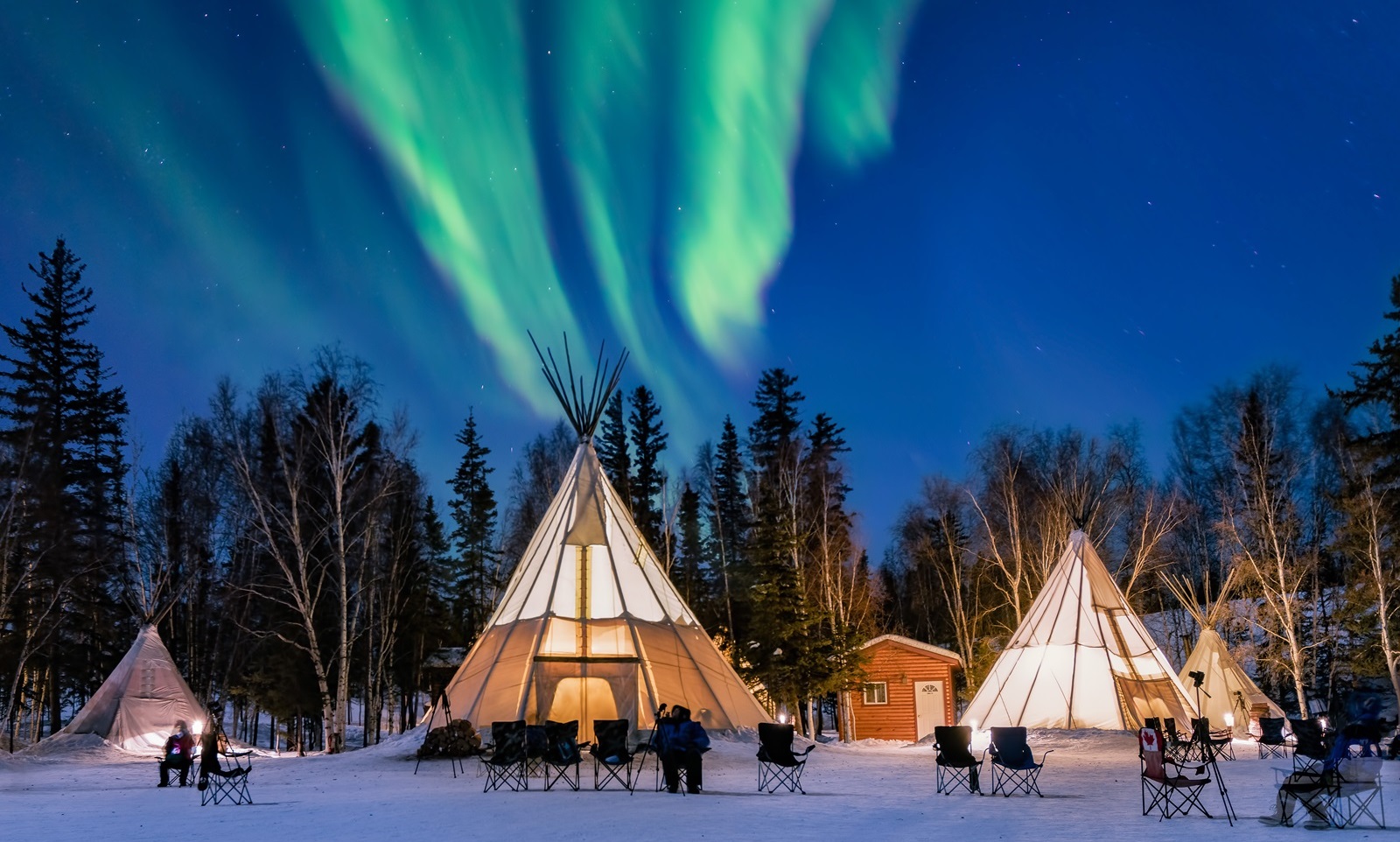
Best Time: The prime time to see the Northern Lights in Yellowknife is from mid-November to early April, with peak activity typically occurring between 10:00 PM and 3:00 AM.
Average Temperature: Expect temperatures ranging from -20°C to -10°C during the aurora season.
What to See: Besides the Northern Lights, explore the local culture at the Prince of Wales Northern Heritage Centre, enjoy dog sledding, and take a snowmobile tour across the frozen landscapes.
3. Whitehorse, Canada’s Yukon
Situated in the Aurora Oval, Whitehorse boasts clear skies that enhance the visibility of the Northern Lights. The city’s location makes spotting the Aurora a relatively easier task, providing a magical experience for avid aurora chasers.
Immerse yourself in the serene wilderness of Canada’s Yukon, where the Northern Lights paint the sky with hues of green and pink, reflected in frozen lakes for an enchanting visual symphony.
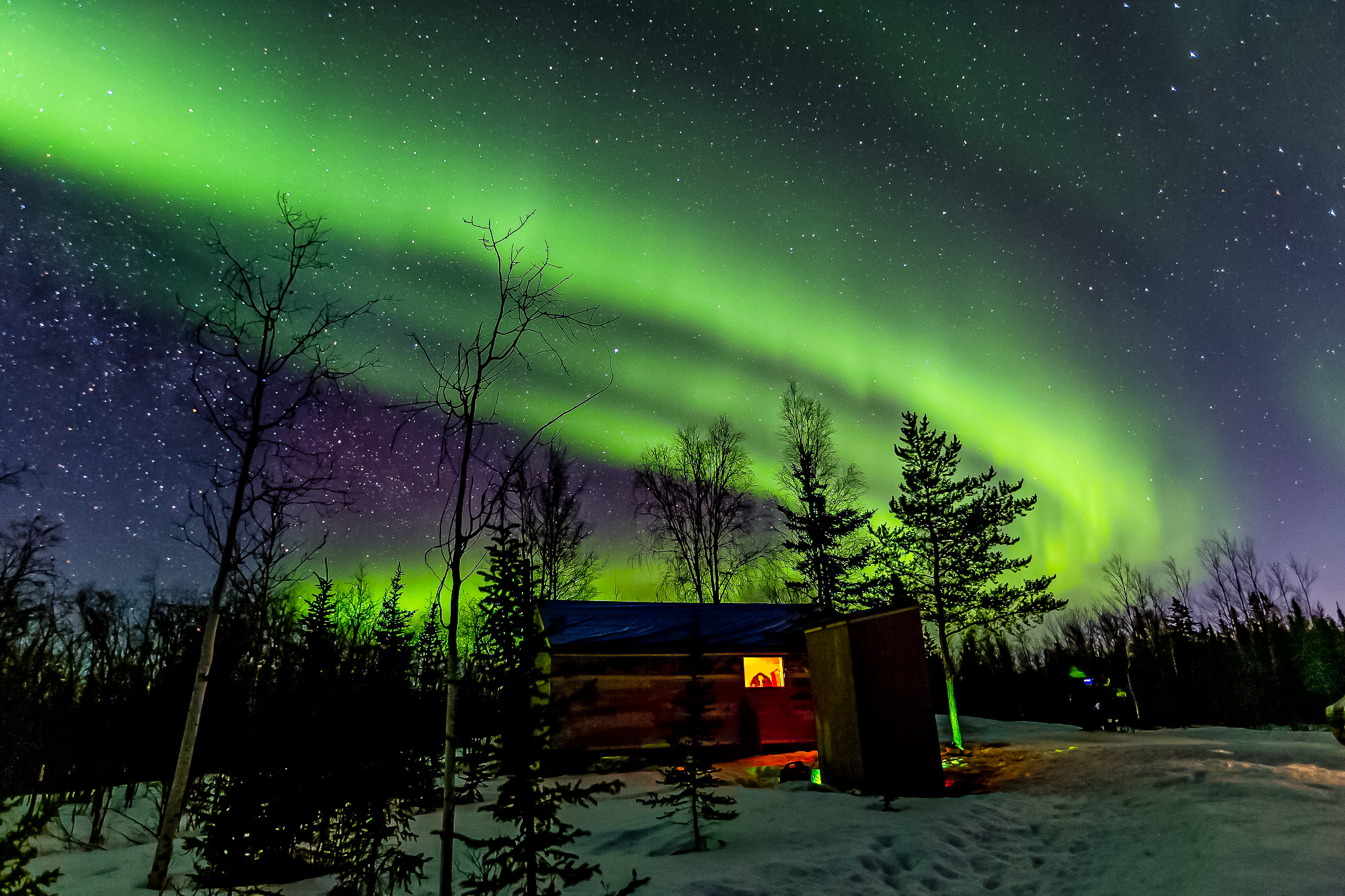
Best Time: The prime time to see the Northern Lights in Whitehorse is from September to April, with peak visibility in the winter months. The best hours for viewing are generally from 10:00 PM to 3:00 AM.
Average Temperature: Be prepared for temperatures ranging from -18°C to -5°C during the aurora season.
What to See: Exploring the pristine Yukon wilderness, taking a scenic drive along the Alaska Highway, and experiencing the local culture.
4. Fairbanks, Alaska
Fairbanks, with its prime location, offers a unique Northern Lights viewing experience. Brave the cold in Alaska, where the Northern Lights weave through the starlit sky, creating an ethereal canvas above the snow-covered landscapes, with the option to enjoy unique winter activities like dog sledding, reindeer tours, and more. Unique accommodations provide a chance to appreciate the night sky and the aurora.

Best Time: The best time to see the Northern Lights in Fairbanks is from late September to early April. The peak viewing hours are typically from 10:00 PM to 3:00 AM.
Average Temperature: Be prepared for extremely cold temperatures, ranging from -34°C to -18°C during the aurora season.
What to See: Enjoy winter activities, visit the Museum of the North, and experience the unique Alaskan culture.
5. Tromso, Norway
Nestled in the middle of the Aurora Oval, Tromso is celebrated for its clear skies, ideal for spotting the Northern Lights. Its coastal location adds to the allure, offering reflections of the Aurora in the surrounding waters.

Best Time: Tromso is a year-round destination for the Northern Lights, with peak visibility from September to March. The best viewing hours are typically from 6:00 PM to midnight.
Average Temperature: Experience temperatures ranging from -4°C to 0°C during the aurora season.
What to See: Witness the Northern Lights casting its enchantment as you explore Tromso’s historic architecture, enjoy a fjord cruise, and visit the Arctic Cathedral.
6. Rovaniemi, Finland
Located in the Arctic Circle, Rovaniemi‘s clear skies enhance the visibility of the Northern Lights. Known as the official hometown of Santa Claus, this city offers a magical atmosphere for aurora enthusiasts.

Best Time: The prime time to see the Northern Lights in Rovaniemi is from September to March. The best hours for viewing are usually from 8:00 PM to 2:00 AM.
Average Temperature: Experience temperatures ranging from -6°C to -15°C during the aurora season.
What to See: Experience the dance of the Northern Lights as you explore Santa Claus Village, visit the Arktikum Science Museum, and go on a reindeer safari.
7. Kiruna, Sweden
In the Arctic Circle, Kiruna is renowned for its clear skies and is home to the famous Icehotel. Rebuilt annually using ice from the Torne River, it provides a unique backdrop for witnessing the Aurora.

Best Time: The best time to see the Northern Lights in Kiruna is from September to March. The peak viewing hours are generally from 8:00 PM to 2:00 AM.
Average Temperature: Expect temperatures ranging from -13°C to -6°C during the aurora season.
What to See: Visit the Icehotel, experience dog sledding, and explore the Kiruna Church.
8. Abisko, Sweden
Abisko, situated in Swedish Lapland, is famous for its consistent aurora activity due to the unique microclimate created by Lake Torneträsk. The Abisko National Park offers some of the clearest skies and least light pollution in Europe.
Key locations include the Aurora Sky Station, a mountaintop viewing lodge that provides guided tours and information about the lights, and the surrounding national park, which offers pristine, unobstructed views.
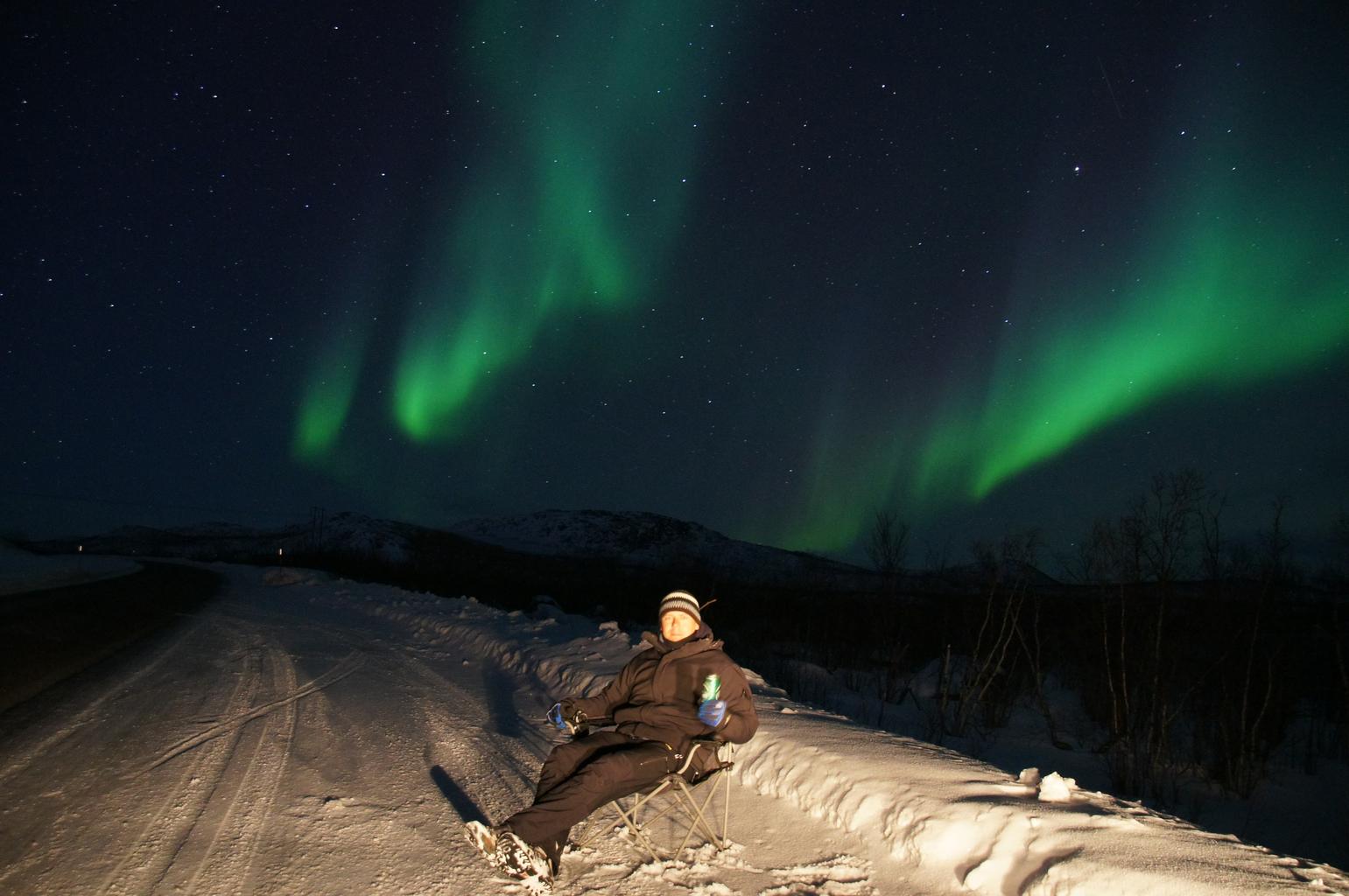
Best Time: The prime time to see the Northern Lights in Abisko is from November to March, with peak viewing hours from 9:00 PM to midnight.
Average Temperature: Expect temperatures ranging from -15°C to -5°C during the aurora season.
What to See: Besides the Northern Lights, explore the stunning landscapes of Abisko National Park, go ice climbing, or take a snowmobile tour through the snowy wilderness.
9. North West Scotland
Scotland offers a splendid Northern Lights experience. The northern regions of Scotland, particularly the Shetland and Orkney Islands, offer ideal locations for observing the Northern Lights (Aurora Borealis). Caithness in the northern mainland is also known for Northern Lights sightings. Additionally, the Isle of Skye and Galloway Forest Park, with darker skies, are potential spots for witnessing this natural phenomenon.
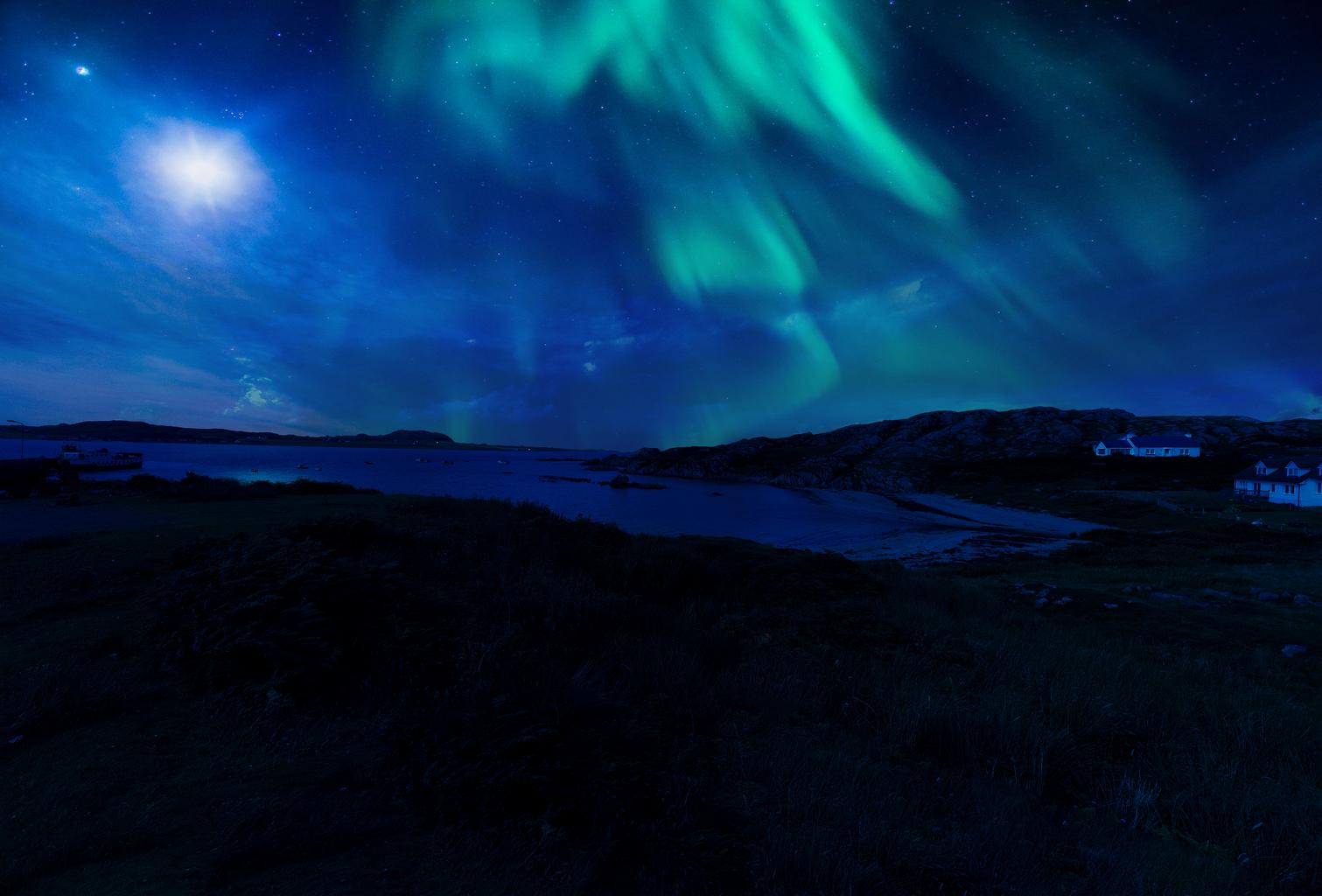
Best Time: The best time to see the Northern Lights in North West Scotland is from October to March. The peak viewing hours are typically from 10:00 PM to 3:00 AM.
Average Temperature: Expect temperatures ranging from 3°C to 8°C during the aurora season.
What to See: Explore the Scottish Highlands, visit Loch Ness, and experience the local culture.
10. Ilulissat, Greenland
Located in the Arctic Circle, Ilulissat’s clear skies make it an ideal spot for observing the Aurora. The city is home to the UNESCO World Heritage Site, the Ilulissat Icefjord, adding to the natural beauty of the spectacle.
Best Time: The prime time to see the Northern Lights in Ilulissat is from October to April. The best hours for viewing are generally from 9:00 PM to 2:00 AM.
Average Temperature: Be prepared for cold temperatures, ranging from -22°C to -8°C during the aurora season.
What to See: Explore the Ilulissat Icefjord, go on a boat tour, and witness the unique Greenlandic culture.
Updated: Best Places to See Southern Lights
Southern Lights, also known as the Aurora Australis, are the southern hemisphere counterpart to the Northern Lights (Aurora Borealis). Like the Northern Lights, the Southern Lights are a natural light display caused by the interaction between charged particles from the sun and the Earth’s magnetic field.
The Southern Lights are typically observed in high-latitude regions of the southern hemisphere, such as Antarctica, southern parts of Australia, New Zealand, and southern South America.
While the Northern Lights are more widely known due to their visibility in locations like Scandinavia and Canada, the Southern Lights offer a similar captivating experience for those in the southern hemisphere. If you’re interested in an aurora trip with a twist, you might also consider these two destinations:
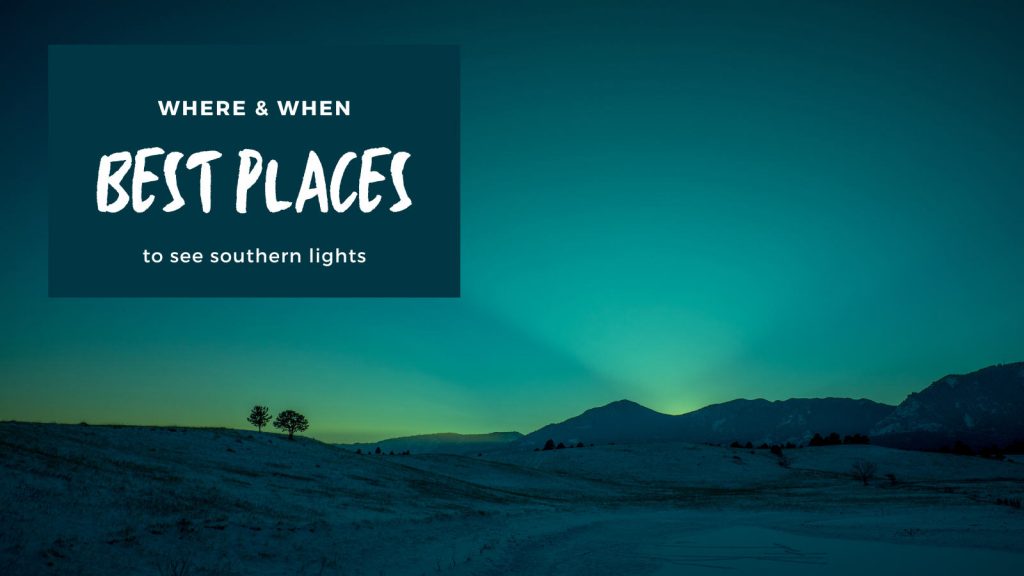
1. Dunedin, New Zealand
Situated in the southern hemisphere, Dunedin is one of the best places to witness the Aurora Australis. Known for its diverse wildlife, including penguins and albatrosses, it offers a unique Southern Lights experience.
Best Time: The best time to see the Aurora Australis in Dunedin is during the winter months, from April to September. The peak viewing hours are typically from 10:00 PM to 3:00 AM.
Average Temperature: Experience temperatures ranging from 5°C to 10°C during the aurora season.
What to See: Explore the Otago Peninsula, visit Penguin Place, and enjoy the vibrant arts scene.
2. Tasmania, Australia
Tasmania, in the southern hemisphere, is among the best places to see the Aurora Australis. Known for its wildlife, including Tasmanian devils and wallabies, the island provides a captivating setting for aurora enthusiasts.
Best Time: The prime time to see the Aurora Australis in Tasmania is during the winter months, from April to September. The best hours for viewing are generally from 9:00 PM to 2:00 AM.
Average Temperature: Expect temperatures ranging from 4°C to 12°C during the aurora season.
What to See: Explore Cradle Mountain, visit Port Arthur, and experience the unique Tasmanian wildlife.
Can I See Aurora Tonight? Forecast Tips
Understanding the principles of aurora forecasting is key to predicting the Northern Lights for tourists. Utilize forecast tools that consider solar activity, geomagnetic storms, and weather conditions to enhance your chances of witnessing this celestial spectacle.
Check reputable websites like the Aurora Forecast Service for accurate and up-to-date information on current aurora conditions. Here are some general tips:
Solar Activity: Higher solar activity, especially during solar storms, increases the likelihood of vibrant Northern Lights displays.
Geomagnetic Conditions: Check space weather websites like the NOAA Space Weather Prediction Center or the Space Weather Prediction Centre of Canada for aurora forecasts.
Look for indicators such as the Kp index, which measures geomagnetic activity. Higher Kp values (Kp 5 and above) generally indicate increased chances of auroral activity.
Solar Wind Data: Monitor solar wind data, especially the speed and density of the solar wind. Coronal Mass Ejections (CMEs) and high solar wind speeds can trigger auroras.
Local Weather Conditions: Clear skies are essential for optimal viewing. Check local weather forecasts to ensure favorable conditions.
Aurora Forecast Apps: Download apps that provide real-time aurora forecasts, allowing you to plan your Northern Lights adventure effectively.
Aurora Tours: Consider joining guided aurora tours led by experienced local guides who are familiar with the optimal viewing locations and can provide real-time updates.
Chasing the Northern Lights across these diverse destinations promises an unforgettable journey. From the accessible landscapes of Southern Iceland to the magical aura of Rovaniemi, each location offers a unique blend of nature’s beauty and cultural charm.
Optimal timing is crucial, so plan your visit during peak months for the best chance to witness the mesmerizing Aurora Borealis. Also remember to stay informed about the best viewing times and leverage forecast tools for an enhanced adventure. May your Northern Lights journey be filled with wonder, and may the celestial dance light up your nights.

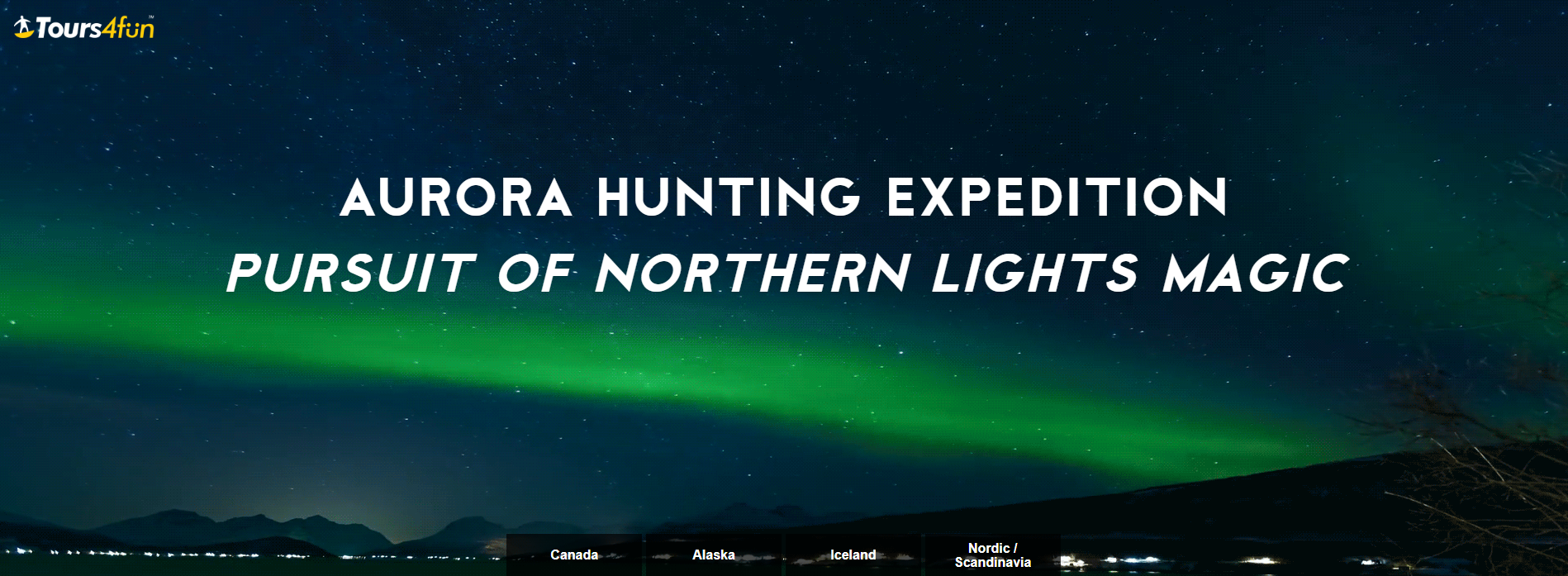







There are no comments.